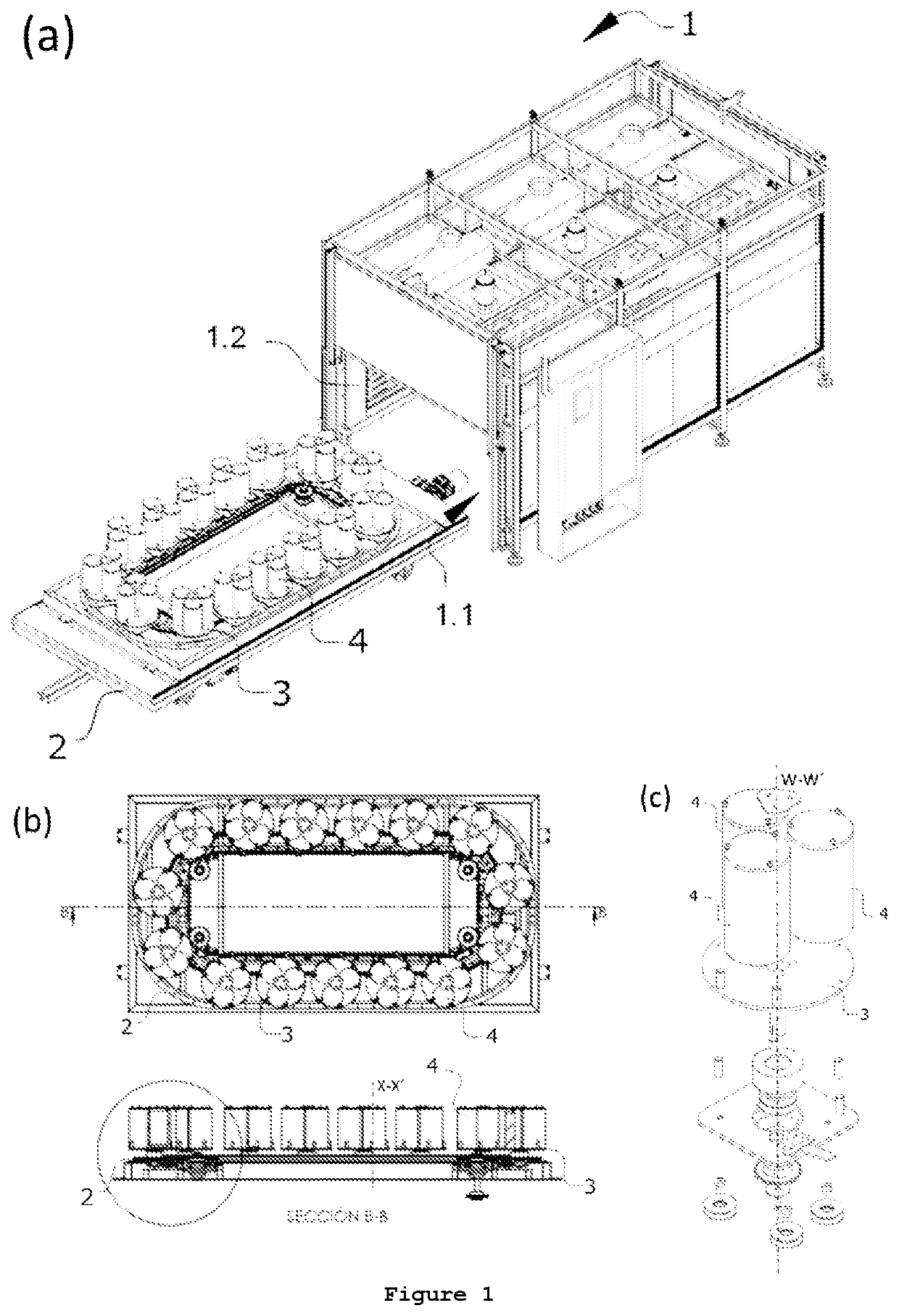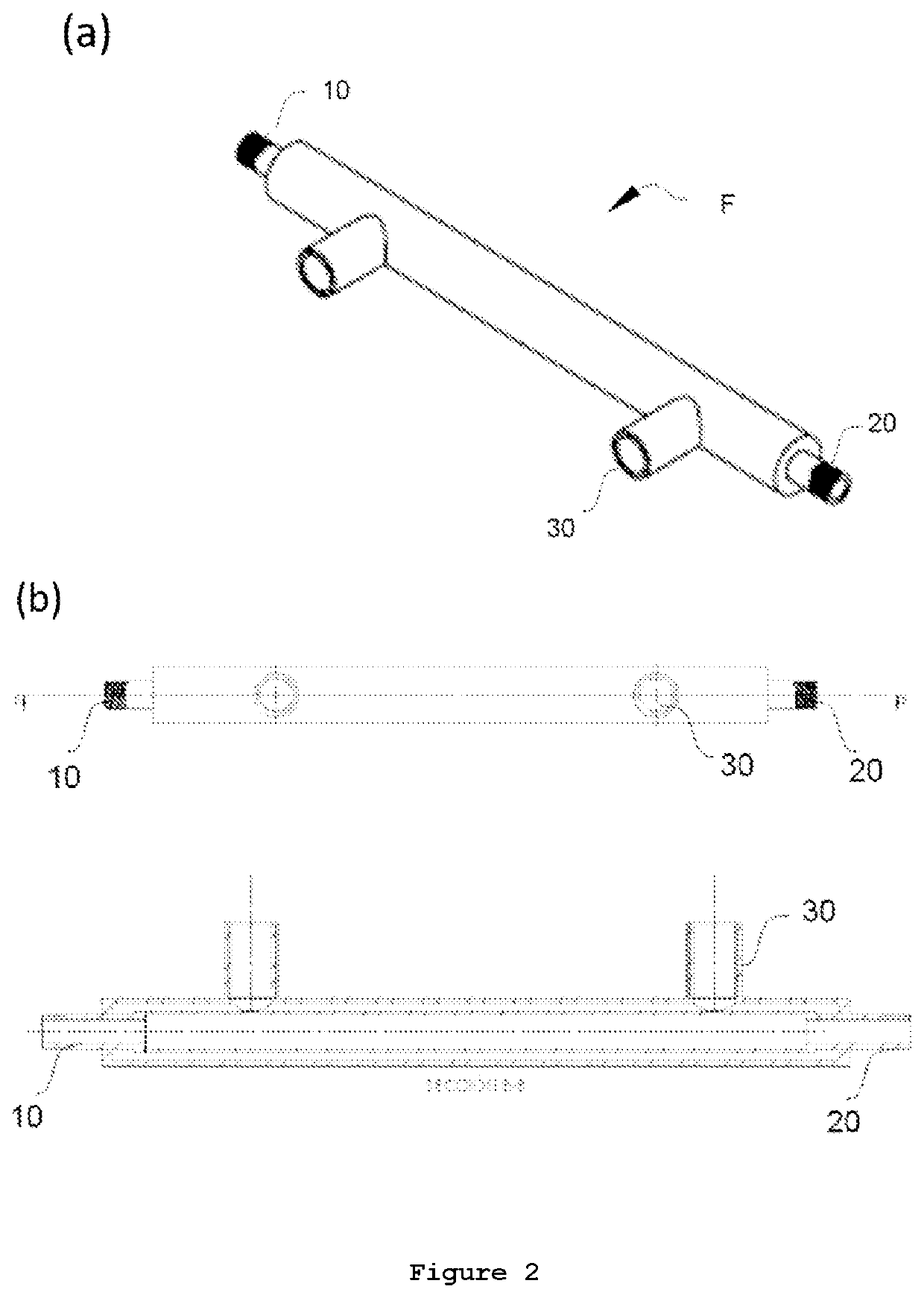Method for preparation of metal nanowires
a metal nanowire and nanowire technology, applied in the field of metal nanowires, can solve the problems of limited reactor size for up-scaled processes, difficulty in tuning the final characteristics of products, and inhomogeneous nanowires obtained in different batches, and achieve the effect of high yield
- Summary
- Abstract
- Description
- Claims
- Application Information
AI Technical Summary
Benefits of technology
Problems solved by technology
Method used
Image
Examples
example 1
on of Silver Nanowires Using Three Different Ovens
[0295]The following solutions were independently prepared:[0296]1.27 mg / ml solution of KBr in ethylene glycol (EG) (KBr mother Solution);[0297]2.06 mg / ml solution of tetra propyl ammonium chloride (TPA-C) in EG (TPA-C mother Solution);[0298]8.83 mg / ml solution of polyvinylpyrrolidone (PVP) in EG (PVP Solution); and[0299]10.71 mg / ml solution of AgNO3 in EG (AgNO3 Solution).
[0300]Procedure: The PVP solution described above was heated to 110° C. under vigorous stirring using a 500 ml round bottom flask in an oil bath with a temperature probe. Once the temperature was stabilized at 110° C., the solution was kept at that temperature for 2 hours and later it was let to cool down to room temperature. A mixture of TPA-C and KBr mother solutions having a 1.65 mole ratio of TPA-C / KBr, and the AgNO3 solution were subsequently added (in that order) to the PVP solution under stirring at room temperature, to form a reaction mixture. The reaction m...
example 2
of Uniform Silver Nanowires with Different Diameters
[0312]Uniform silver nanowires with different average diameters were synthesized by four different reactions named reaction 1 to 4 as follows:
Reaction 1 (Silver Nanowires with 17±3 nm Average Diameter):
[0313]The following solutions were independently prepared:[0314]1.20 mg / ml solution of KBr in EG (KBr mother Solution);[0315]5.00 mg / ml solution of TPA-C in EG (TPA-C mother Solution);[0316]8.83 mg / ml solution of PVP powder in EG (PVP solution); and[0317]10.71 mg / ml solution of AgNO3 in EG (AgNO3 Solution).
[0318]Procedure: The PVP Solution was heated at 110° C. under vigorous stirring in a 50 mL round bottom flask equipped with a silicone oil bath and a temperature probe and was kept at that temperature for 2 hours. Later, the oil bath was removed and the reaction was allowed to cool down to room temperature. Then, the PVP solution is transferred to a 50 ml solvothermal reactor.
[0319]A mixture of TPA-C and KBr mother solutions with a...
example 3
g the Synthesis of Silver Nanowires in Different Reactors
[0331]The synthesis of uniform silver nanowires has been scaled-up using different types of reactors: a 50 ml PTFE-lined stainless steel solvotermal reactor, a 11 PTFE-lined stainless steel solvotermal reactor and a 11 PTFE-coated aluminium reactor.
[0332]The following solutions were independently prepared:[0333]3.72 mg / ml solution of NaCl in EG (NaCl mother Solution);[0334]8.83 mg / ml solution of PVP in EG (PVP Solution); and[0335]10.71 mg / ml solution of AgNO3 in EG (AgNO3 Solution).
Reaction 5:
[0336]The PVP solution described above was heated to 110° C. under vigorous stirring using a 2 L round bottom flask, and once the temperature reached 110° C., it was kept at that temperature for 2 hours. Then, the reaction was allowed to cool down to room temperature. Later, 13.76 ml of NaCl mother solution was quickly added under stirring to the PVP solution and, after that, the AgNO3 solution was also quickly added under vigorous stirri...
PUM
| Property | Measurement | Unit |
|---|---|---|
| temperature | aaaaa | aaaaa |
| temperature | aaaaa | aaaaa |
| molar ratio | aaaaa | aaaaa |
Abstract
Description
Claims
Application Information
 Login to View More
Login to View More - R&D
- Intellectual Property
- Life Sciences
- Materials
- Tech Scout
- Unparalleled Data Quality
- Higher Quality Content
- 60% Fewer Hallucinations
Browse by: Latest US Patents, China's latest patents, Technical Efficacy Thesaurus, Application Domain, Technology Topic, Popular Technical Reports.
© 2025 PatSnap. All rights reserved.Legal|Privacy policy|Modern Slavery Act Transparency Statement|Sitemap|About US| Contact US: help@patsnap.com



